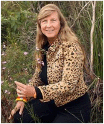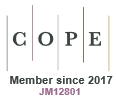Biological control of Pyrrhoderma noxium: an aggressive basidiomycete responsible for brown root rot of trees
Harrchun Panchalingam A , Cherrihan Adra A , Alison Shapcott A and İpek Kurtböke A *A

Dr Harrchun Panchalingam completed his PhD under Dr Kurtböke’s supervision in 2022 at the University of the Sunshine Coast specialising in biological control methods against Pyrrhoderma noxium using Trichoderma species. Since then, he has been working as a lab supervisor and overses the production of Driscoll’s Australia berry tissue culture operation in Queensland. His research interests are biological control of plant diseases, development of biofertilisers, bioremediation of hydrocarbons and micropropagation of plants. |

Dr Cherrihan Adra is currently a Postdoctoral Research Fellow at the University of the Sunshine Coast (UniSC) within the Natural Product Chemistry research group. She was awarded her PhD in 2024 specialising in biological control methods against Pyrrhoderma noxium using natural products from termite-gut bacteria under Dr Kurtböke’s supervision. After completion of her PhD, she worked on UniSC’s Critical Zone Observation site where she applied Synchrotron-based techniques to investigate sulfur oxidation states in vadose zone soil. Currently, for her postdoctoral research, she is investigating the biological activities of natural products derived from stingless bee propolis including its antimicrobial, anti-inflammatory and anti-cancer properties. |

Prof. Alison Shapcott has been researching the population genetics and ecology of rainforest plants and palms since 1985. She is particularly interested in the evolution and maintenance of biodiversity. She has worked with rainforest types across Australia from Tasmania to Cape Tribulation and the Northern Territory as well as in Madagascar, Papua New Guinea, Djibouti and Brunei. She has established an extensive international network and regularly collaborates with researchers at the Royal Botanical Gardens of Kew (UK), the Smithsonian Institution NMNH (USA) and the Queensland Herbarium. |

Assoc. Prof. İpek Kurtböke has been working in the field of biodiscovery and has been an active member of the international actinomycete research community since 1982. She currently conducts research and teaches in the field of environmental and applied microbiology and biotechnology at the University of the Sunshine Coast, Queensland. She has also been an active member of the World Federation of Culture Collections (WFCC) and currently is the President of the Federation. She was also an Editorial Board member of Microbiology Australia for 20 years (2004–2024). |
Abstract
Globally, various biotic stressors are threatening the production of crops including wheat, cotton, maize, vegetables, fruit and ornamentals with up to 50–75% yield losses caused predominantly by fungal pathogens. One such fungal pathogen is Pyrrhoderma noxium, an aggressive basidiomycete fungus that induces the invasive disease of brown root rot in a variety of tree hosts, spanning over 250 species. This mini review will focus on various characteristics of this pathogen which is now a widespread across tropical and subtropical regions of the world infecting broad-leaved, coniferous woody, herbaceous, fruit and ornamental trees with examples of the research conducted at the University of the Sunshine Coast jointly with the Brisbane City Council.
 Dr Harrchun Panchalingam completed his PhD under Dr Kurtböke’s supervision in 2022 at the University of the Sunshine Coast specialising in biological control methods against Pyrrhoderma noxium using Trichoderma species. Since then, he has been working as a lab supervisor and overses the production of Driscoll’s Australia berry tissue culture operation in Queensland. His research interests are biological control of plant diseases, development of biofertilisers, bioremediation of hydrocarbons and micropropagation of plants. |
 Dr Cherrihan Adra is currently a Postdoctoral Research Fellow at the University of the Sunshine Coast (UniSC) within the Natural Product Chemistry research group. She was awarded her PhD in 2024 specialising in biological control methods against Pyrrhoderma noxium using natural products from termite-gut bacteria under Dr Kurtböke’s supervision. After completion of her PhD, she worked on UniSC’s Critical Zone Observation site where she applied Synchrotron-based techniques to investigate sulfur oxidation states in vadose zone soil. Currently, for her postdoctoral research, she is investigating the biological activities of natural products derived from stingless bee propolis including its antimicrobial, anti-inflammatory and anti-cancer properties. |
 Prof. Alison Shapcott has been researching the population genetics and ecology of rainforest plants and palms since 1985. She is particularly interested in the evolution and maintenance of biodiversity. She has worked with rainforest types across Australia from Tasmania to Cape Tribulation and the Northern Territory as well as in Madagascar, Papua New Guinea, Djibouti and Brunei. She has established an extensive international network and regularly collaborates with researchers at the Royal Botanical Gardens of Kew (UK), the Smithsonian Institution NMNH (USA) and the Queensland Herbarium. |
 Assoc. Prof. İpek Kurtböke has been working in the field of biodiscovery and has been an active member of the international actinomycete research community since 1982. She currently conducts research and teaches in the field of environmental and applied microbiology and biotechnology at the University of the Sunshine Coast, Queensland. She has also been an active member of the World Federation of Culture Collections (WFCC) and currently is the President of the Federation. She was also an Editorial Board member of Microbiology Australia for 20 years (2004–2024). |
References
1 Chung CL, Lee TJ, Akiba M, Lee HH, Kuo TH, Liu D, Ke HM, Yokoi T, Roa MB, Lu MJ, Chang YY, Ann PJ, Tsai JN, Chen CY, Tzean SS, Ota Y, Hattori T, Sahashi N, Liou RF, Kikuchi T, Tsai IJ. Comparative and population genomic landscape of Phellinus noxius: a hypervariable fungus causing root rot in trees. Mol Ecol 2017; 26: 6301-6316.
| Crossref | Google Scholar | PubMed |
2 Chung CL, Huang SY, Huang YC, Tzean SS, Ann PJ, Tsai JN, Yang CC, Lee HH, Huang TW, Huang HY, Chang TT, Lee HL, Liou RF. The genetic structure of Phellinus noxius and dissemination pattern of brown root rot disease in Taiwan. PLoS One 2015; 10: e0139445.
| Crossref | Google Scholar | PubMed |
3 Hsiao WW, Hung TH, Sun EJ. The pathogenicity of basidiospores of Phellinus noxius which causes brown root rot disease in Taiwan. Taiwania 2019; 64: 263-268.
| Crossref | Google Scholar |
4 Sahashi N, Akiba M, Takemoto S, Yokoi T, Ota Y, Kanzaki N. Phellinus noxius causes brown root rot on four important conifer species in Japan. Eur J Plant Pathol 2014; 140: 869-873.
| Crossref | Google Scholar |
5 Farid MA, Lee SS, Maziah Z, Patahayah M. Pathogenicity of Rigidoporus microporus and Phellinus noxius against four major plantation tree species in Peninsular Malaysia. J Trop Sci 2009; 21(4): 289-298.
| Google Scholar |
6 Hodges CS, Tenorio JA. Root disease of Delonix regia and associated tree species in the Mariana Islands caused by Phellinus noxius. Plant Dis 1984; 68: 334-336.
| Crossref | Google Scholar |
7 Bolland L. Phellinus noxius: cause of a significant root-rot in Queensland hoop pine plantations. Aust For 1984; 47: 2-10.
| Crossref | Google Scholar |
8 Panchalingam H, Powell D, Adra C, Foster K, Tomlin R, Quigley BL, Nyari S, Hayes RA, Shapcott A, Kurtböke Dİ. Assessing the various antagonistic mechanisms of Trichoderma strains against the brown root rot pathogen Pyrrhoderma noxium infecting heritage fig trees. J Fungi (Basel) 2022; 8: 1105.
| Crossref | Google Scholar | PubMed |
9 Panchalingam H, Ashfield-Crook N, Naik V, Frenken R, Foster K, Tomlin R, Shapcott A, Kurtböke Dİ. Testing the Biocontrol Ability of a Trichoderma-Streptomycetes Consortium against Pyrrhoderma noxium (Corner) LW Zhou and YC Dai in Soil. J Fungi (Basel, Switzerland) 2022; 9: 67.
| Crossref | Google Scholar | PubMed |
10 Adra C, Panchalingam H, İpek Kurtböke D. Termite–gut-associated actinomycetes as biological control agents against phytopathogen Pyrrhoderma noxium. Microbiol Aust 2022; 43: 190-193.
| Crossref | Google Scholar |
11 Zhou LW, Ji XH, Vlasák J, Dai YC. Taxonomy and phylogeny of Pyrrhoderma: a redefinition, the segregation of Fulvoderma, gen. nov., and identifying four new species. Mycologia 2018; 110: 872-889.
| Crossref | Google Scholar | PubMed |
12 EFSA Panel on Plant Health (PLH), Bragard C, Baptista P, Chatzivassiliou E, Di Serio F, Gonthier P, Jaques Miret JA, Justesen AF, MacLeod A, Magnusson CS, Milonas P, Navas-Cortes JA, Parnell S, Potting R, Stefani E, Thulke HH, Van der Werf W, Vicent Civera A, Yuen J, Zappalà L, Golic D, Gobbi A, Maiorano A, Pautasso M, Reignault PL. Pest categorisation of Pyrrhoderma noxium. EFSA J 2024; 22(3): e8667.
| Crossref | Google Scholar | PubMed |
13 Garfinkel AR, Cannon PG, Klopfenstein NB, Stewart JE, Kim M-S. Identification of genetic groups within the invasive brown root rot pathogen, Pyrrhoderma noxium (formerly Phellinus noxius). In Reynolds GJ, Wilhelmi NP, Palacios compilers P, editors. Proceeding of the 66th Western International Forest Disease Work Conference; 3–7 June 2019; Estes Park, CO, WIFDWC; 2020. pp. 141–145.
14 Stewart JE, Kim MS, Ota Y, Sahashi N, Hanna JW, Akiba M, Ata JP, Atibalentja N, Brooks F, Chung C-L, Dann EK, Mohd Farid A, Hattori T, Lee SS, Otto K, Pegg GS, Schlub RL, Shuey LS, Tang AMC, Tsai J-N, Cannon PG, Klopfenstein NB. Phylogenetic and population genetic analyses reveal three distinct lineages of the invasive brown root-rot pathogen, Phellinus noxius, and bioclimatic modelling predicts differences in associated climate niches. Eur J Plant Pathol 2020; 156: 751-766.
| Crossref | Google Scholar |
15 Farid AM, Lee SS, Rosli HM, Maziah Z, Norwati M. Basal Root Rot, a new Disease of Teak (Tectona grandis) in Malaysia caused by Phellinus noxius. Malays J Microbiol 2005; 1: 40-45.
| Crossref | Google Scholar |
16 Ann PJ, Chang TT, Ko WH. Phellinus noxius brown root rot of fruit and ornamental trees in Taiwan. Plant Dis 2002; 86: 820-826.
| Crossref | Google Scholar | PubMed |
17 Schwarze FWMR, Jauss F, Spencer C, Hallam C, Schubert M. Evaluation of an antagonistic Trichoderma strain for reducing the rate of wood decomposition by the white rot fungus Phellinus noxius. Biol Control 2012; 61: 160-168.
| Crossref | Google Scholar |
18 Chang TT, Yang WW. Phellinus noxius in Taiwan: distribution, host plants and the pH and texture of the rhizosphere soils of infected hosts. Mycological Research 1998; 102(9): 1085-1088.
| Google Scholar |
19 Tchotet Tchoumi JM, Vivas M, Coetzee MPA, Rajchenberg M. Wood‐rotting basidiomycetes associated with declining native trees in timber‐harvesting compartments of the Garden Route National Park of South Africa. Austral Ecology 2017; 42: 947-963.
| Crossref | Google Scholar |
20 Lin CJ, Chung CH, Wu ML, Cho CL. Detection of Phellinus noxius decay in Sterculia foetida tree. J Trop For Sci 2013; 25(4): 487-496.
| Google Scholar |
21 Agustini L, Francis A, Glen M, Indrayadi H, Mohammed CL. Signs and identification of fungal root‐rot pathogens in tropical Eucalyptus pellita plantations. For Pathol 2014; 44: 486-495.
| Crossref | Google Scholar |
22 Mendgen K, Hahn M, Deising H. Morphogenesis and mechanisms of penetration by plant pathogenic fungi. Annu Rev Phytopathol 1996; 34: 367-386.
| Crossref | Google Scholar | PubMed |
23 Takashi M, Kikuno H, Kajikawa, A, Yokota, K. In planta distribution of Pyrrhoderma maxium, the causal agent of brown root rot of mango. AGRIS – International System for Agricultural Science and Technology, FAO; 2023. Available at https://agris.fao.org/search/en/providers/122430/records/66d56f89028a9120ab953fff
24 Chou H, Xiao YT, Tsai JN, Li TT, Wu HY, Liu LD, Tzeng DS, Chung CL. In Vitro and in Planta Evaluation of Trichoderma asperellum TA as a Biocontrol Agent Against Phellinus noxius, the Cause of Brown Root Rot Disease of Trees. Plant Dis 2019; 103: 2733-2741.
| Crossref | Google Scholar | PubMed |
25 Chang TT. Survival of Phellinus noxius in soil and in the roots of dead host plants. Phytopathology 1996; 86: 272-276.
| Crossref | Google Scholar |
26 Wu ZC, Chang YY, Lai QJ, Lin HA, Tzean SS, Liou RF, Tsai IJ, Chung CL. Soil is not a reservoir for Phellinus noxius. Phytopathology 2020; 110: 362-369.
| Crossref | Google Scholar | PubMed |
27 Godoy MG, Amorim GM, Barreto MS, Freire DMG (2018) Agricultural residues as animal feed: protein enrichment and detoxification using solid-state fermentation. In: Larroche C, Soccol CR, editors. Current Developments in Biotechnology and Bioengineering. Elsevier, Amsterdam; 2018. pp. 235–256. doi:10.1016/B978-0-444-63990-5.00012-8
28 Goodell B, Qian Y, Jellison J Fungal decay of wood: soft rot-brown rot-white rot. In: Schultz TP, Militz H, Freeman MH, Goodell B, Nicholas DD, editors. Development of Commercial Wood Preservatives: Efficacy, Environmental, and Health Issues, Vol. 982. Washington, DC: American Chemical Society; 2008. pp. 9–31. doi:10.1021/bk-2008-0982.ch002
29 Ibarra Caballero JR, Ata JP, Leddy KA, Glenn TC, Kieran TJ, Klopfenstein NB, Kim MS, Stewart JE. Genome comparison and transcriptome analysis of the invasive brown root rot pathogen, Phellinus noxius, from different geographic regions reveals potential enzymes associated with degradation of different wood substrates. Fungal Biol 2020; 124(2): 144-154.
| Crossref | Google Scholar | PubMed |
30 Dixon DJ. A taxonomic revision of the Australian Ficus species in the section Malvanthera (Ficus subg. Urostigma: Moraceae). Telopea 2003; 10: 125-153.
| Crossref | Google Scholar |
31 Truchan M, Tkachenko H, Buyun L, Kurhaluk L, Góralczyk A, Honcharenko V, Prokopiv A, Osadowski Z. Ficus Macrophylla Desf. ex Pers. Leaves (Moraceae) possess antimicrobial potential for the prevention of bacterial infections: preliminary in vitro study. Agrobiodiversity Improv Nutr, Health Life Qual 2019; 3: 117-121.
| Crossref | Google Scholar |
32 Tubby KV, Webber JF. Pests and diseases threatening urban trees under a changing climate. For Int J For Res 2010; 83: 451-459.
| Crossref | Google Scholar |
33 Rabiey M, Hailey LE, Roy SR, Grenz K, Al-Zadjali MAS, Glyn A. Barrett GA, Jackson RW. Endophytes vs tree pathogens and pests: can they be used as biological control agents to improve tree health? Eur J Plant Pathol 2019; 155: 711-729.
| Crossref | Google Scholar |
34 Moore T. Common solution to rotten problem in Brisbane parks. Brisbane Times, 25 May 2012. Available at https://www.brisbanetimes.com.au/national/queensland/common-solution-to-rotten-problem-in-brisbane-parks-20120524-1z6q4.html
35 Gezgin Y, Gül DM, Sözer Şenşatar S, Kara CU, Sargın S, Sukan FV, Eltem R. Evaluation of Trichoderma atroviride and Trichoderma citrinoviride growth profiles and their potentials as biocontrol agent and biofertilizer. Turk J Biochem 2019; 45: 1-13.
| Crossref | Google Scholar |
36 Sood M, Kapoor D, Kumar V, Sheteiwy MS, Ramakrishnan M, Landi M, Araniti F, Sharma A. Trichoderma: the “secrets” of a multitalented biocontrol agent. Plants (Basel, Switzerland) 2020; 9: 762.
| Crossref | Google Scholar | PubMed |
37 Benítez T, Rincón AM, Limón MC, Codón AC. Biocontrol mechanisms of Trichoderma strains. Int Microbiol 2004; 7: 249-260.
| Google Scholar | PubMed |
38 Kurtböke İ. Actinomycetes: what more can they offer in an era of metabolic engineering and artificial intelligence? Microbiol Aust 2025; 46(2): 72-76.
| Crossref | Google Scholar |
39 Kurtböke I. From Actinomycin onwards: Actinomycete success stories. Microbiol Aust 2012; 33(3): 108-110.
| Crossref | Google Scholar |
40 Yanti Y, Zainon MN, Umi Marshida AH. Antagonistic activity of three Actinomycetes, MG01, MG02 And KT2F towards Phellinus noxius. In: Business, Engineering and Industrial Applications (ISBEIA), IEEE Symposium, Bandung, Indonesia. 2012. pp. 729–732. doi:10.1109/ISBEIA.2012.6422986
41 Yaacob Y. Biocontrol of plant pathogen Phellinus noxius by selected actinomycetes, bacteria and fungi (MSc). Malaysia: Universiti Teknologi MARA; 2014. Available at https://ir.uitm.edu.my/id/eprint/16468/
42 Panchalingam H. Integrated management of Pyrrhoderma noxium by selected Trichoderma and actinomycete strains. PhD Dissertation, University of the Sunshine Coast, Queensland, Australia; 2022. doi:10.25907/00681
43 Adra C. The Biocontrol Potential of Termite-gut-associated Actinomycetes against Phytopathogenic Fungus Pyrrhoderma noxium. PhD Dissertation, University of the Sunshine Coast, Queensland, Australia; 2024. doi:10.25907/00819


